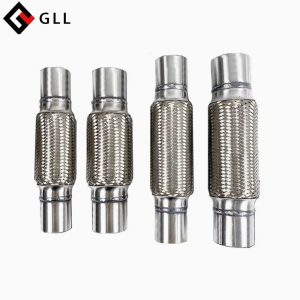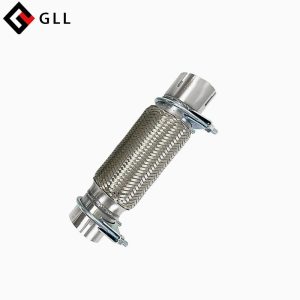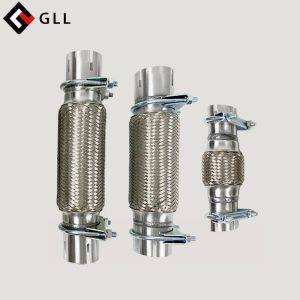


Our GLL hydroformed flange cover reinforcement steel metal bellows are made of high nickel alloy steel (such as Inconel 625) or super duplex stainless steel (such as 2507), and are designed to cope with high temperature (≥600℃), high pressure (≥10,000 psi), and strong corrosion (such as seawater and hydrogen sulfide environments).
GLL Material properties include:
Resistance to stress corrosion cracking (SCC): Through special heat treatment process, the grain boundary stability of the material is improved by 40%, effectively avoiding brittle fracture in chloride ion environment.
Fatigue life optimization: Adding trace rare earth elements to improve the microstructure, so that our GLL bellows can still maintain more than 95% of the initial elasticity in a million cycle test.
Customized material formulation: Provide material composition adjustment services according to customer working conditions, such as adding titanium alloy coating to enhance erosion resistance.
Our GLL Metal Bellows uses advanced hydraulic forming technology for production, which has the following significant features:
Precision forming technology: Our GLL hydraulic bulging process achieves isostatic plastic deformation of metal materials through a controllable pressure field. Its uniform pressure loading system ensures that the geometric parameters of each wave crest and trough of the bellows (wave distance ±0.02mm, wave height tolerance <0.05mm) strictly comply with the ISO 10380 standard design requirements, achieving nanometer-level forming precision control.
High-strength material: to ensure the durability of the bellows under high pressure and harsh environment, GLL uses high-quality steel and enhances its strength and corrosion resistance through heat treatment process.
Flange cover reinforcement design: The flange cover part of the bellows is specially designed and reinforced to withstand greater pressure and impact, preventing structural instability caused by excessive pressure.
Our GLL original 3D Hydroforming technology completely revolutionizes traditional welding or stamping processes. Its advantages are reflected in:
Seamless integrated structure: high-pressure liquid is used to evenly expand the metal blank in the mold, eliminating weld defects and reducing leakage risks by 90%.
Stress distribution optimization: simulation software assists in the design of corrugation geometric parameters, reducing the circumferential stress gradient by 35% and significantly improving the anti-buckling ability.
Complex shape forming capability: asymmetric and variable diameter corrugated structures can be manufactured to adapt to special-shaped flanges or high-temperature thermal expansion compensation scenarios.
Residual stress control: deep cryogenic treatment (-196℃) is used after forming to eliminate processing internal stress and improve dimensional stability by 50%.

